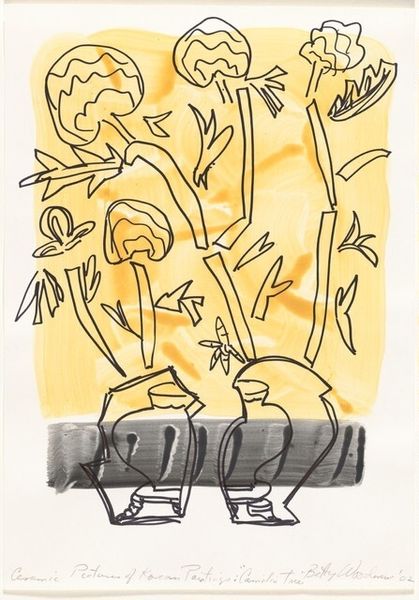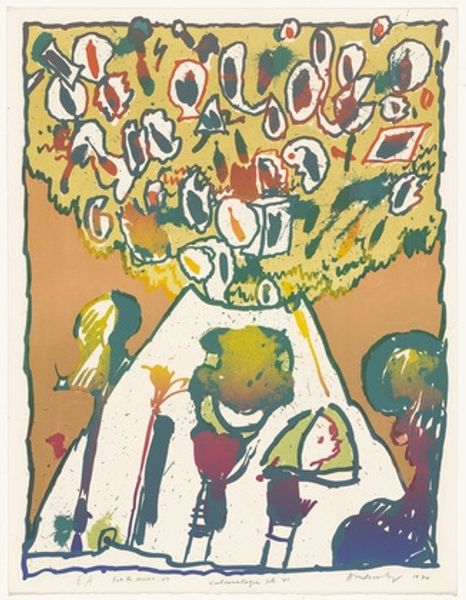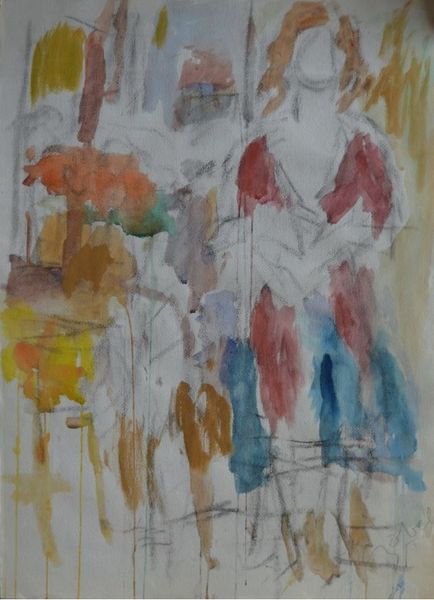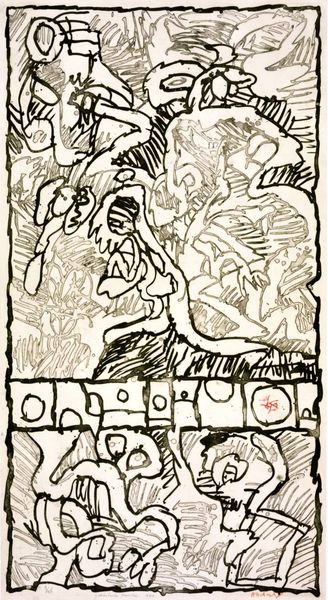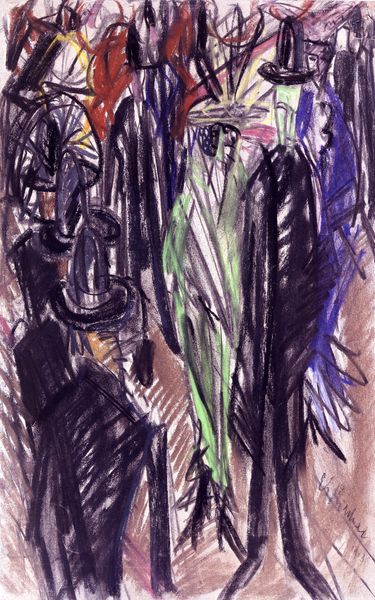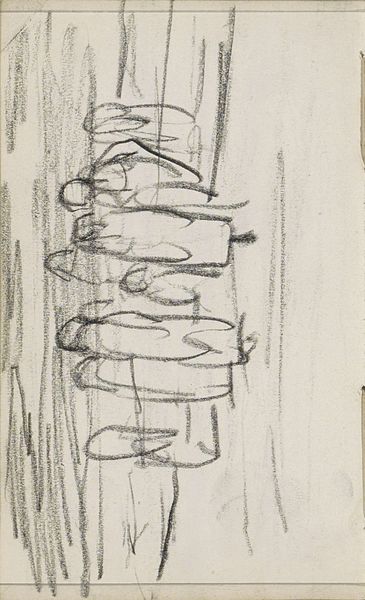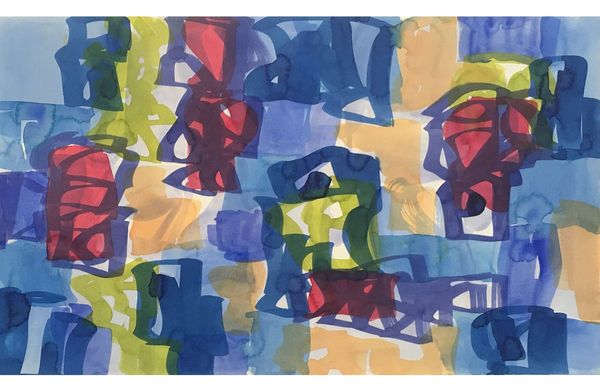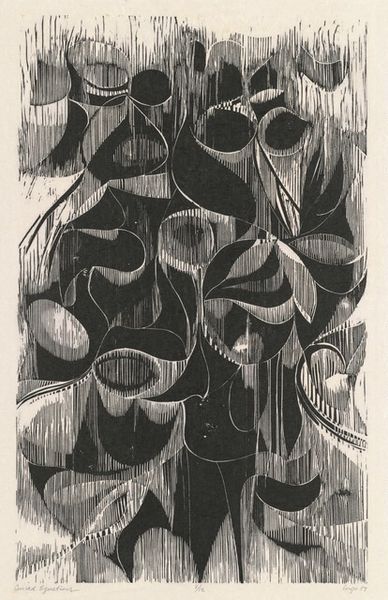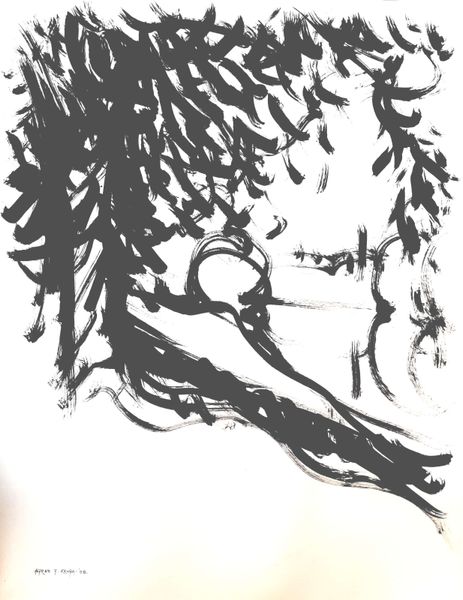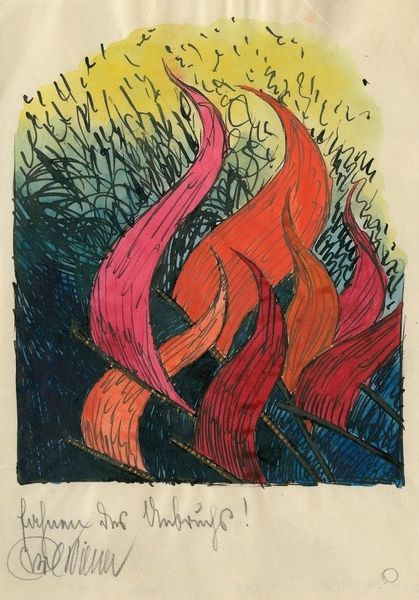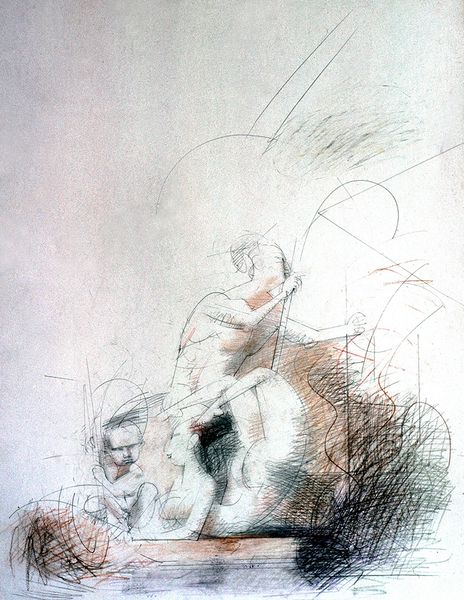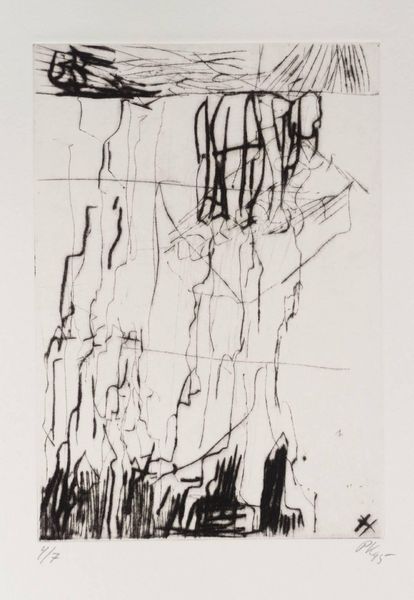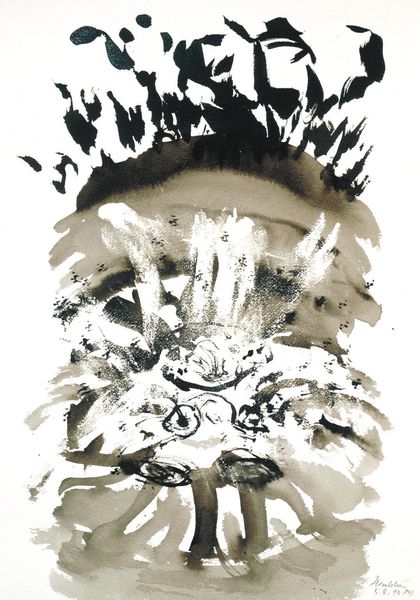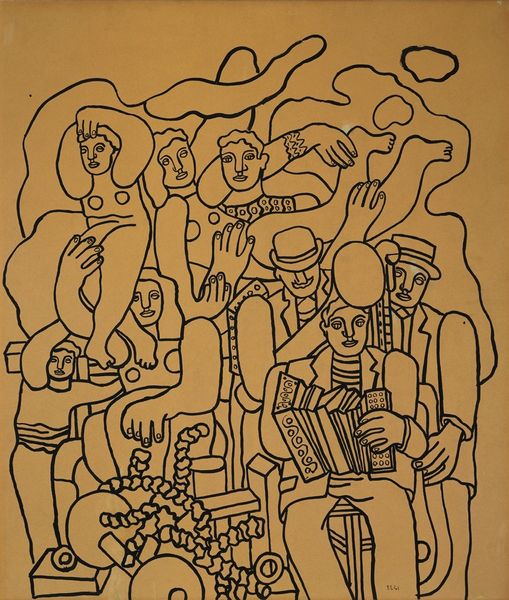
Copyright: Public Domain: Artvee
Curator: Right now, we’re looking at a drawing by Karl Wiener, probably created around 1922. It’s called “Idiotie," and it seems to be rendered with a combination of ink and watercolor. Editor: My first thought? These faces…they're all sharp angles and smudged sadness. Like a chorus of anxieties crowded into a too-small space. You can almost feel the weight of…something, pressing down. Curator: Wiener was exploring some very complex emotional states at this point in his career, anxieties very much tied to the tumultuous period following World War I, and "Idiotie" certainly leans into that. Look closely—the ink lines are almost frantic, aren’t they? Layered with those almost lurid washes of watercolor. It makes you wonder about his state of mind, the feverish urgency of needing to capture something intangible. Editor: Urgency born, no doubt, from material instability. The post-war scarcity, the availability – or lack thereof – of particular papers and inks would absolutely dictate not just the aesthetic choices, but the *speed* and *method* of creation. Those hasty lines weren’t necessarily born of angst alone, but the pure economics of making. Was he using cheaper paper, hence the bleeding washes? Was it a fight to get decent ink? That all screams louder than the artist's personal "torment," you know? Curator: Interesting—so you see the limitations breeding the expression, instead of the other way around? I like that! It shifts the narrative away from tortured genius to a very real person grappling with tangible constraints. Even that repetition of faces – perhaps it wasn't solely a symbolic comment, but simply a resourceful use of space on a limited page. It's a portrait of making-do, as much as a psychological study. Editor: Exactly. The way materials behave, the choices made out of necessity, those are often far more revealing than any conscious "artistic" statement. Think of the labor that went into even sourcing those basic materials. How does that work impact the artist’s hand, the artwork’s feel, the cultural understanding of value? Curator: So, Wiener’s "Idiotie," through your eyes, becomes not just an exploration of post-war psychological anxieties, but also a record of material constraints and artistic resourcefulness. Editor: Right, the 'Idiotie' isn’t just what's depicted but where it comes from—and under what conditions. Curator: Well, I’m definitely seeing new layers in this little sketch now, avenues for understanding beyond the immediate impression. Editor: It always goes back to the stuff, the making—it’s all right there in the paper and the ink if we’re willing to look.
Comments
No comments
Be the first to comment and join the conversation on the ultimate creative platform.
